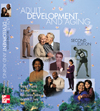
Education, Work, Leisure, and Retirement |  |
Learning ObjectivesFollowing the completion of this chapter, students will be able to: - Define and explain age-differentiated and age-integrated life structures.
- Describe the characteristics of college and university students in the United States.
- Discuss the trend to participate in lifelong learning and identify the goals of mature learners.
- Describe the relationship between literacy and employment and the prevalence of illiteracy both nationally and globally.
- List and describe four models of models/theories of vocational choice and career development.
- Identify and describe changing occupational patterns as they pertain to gender and minorities.
- Explain the relationship between age and job performance, including age stereotypes and attempts to prevent age discrimination.
- Describe the characteristics and prevalence of occupational stress.
- Identify the effects of unemployment on the individual and family members, and explain factors that improve one's ability to cope with job loss.
- Identify and describe five hypotheses that explain the relationships between work, intellectual growth, and leisure activities.
- Explain national and international trends in and attitudes toward retirement.
- Compare and contrast the types of government-sponsored programs available to retirees.
- Describe strategies that adults follow to plan for and make the transition to retirement.
- List and describe three main categories of activities that occupy older adults after retirement.
- Discuss the relationship between financial well-being, physical health, mental health, social support, and retirement by adults.
- Define dependency ratio and explain how it will change over the next four decades.
|
|
|